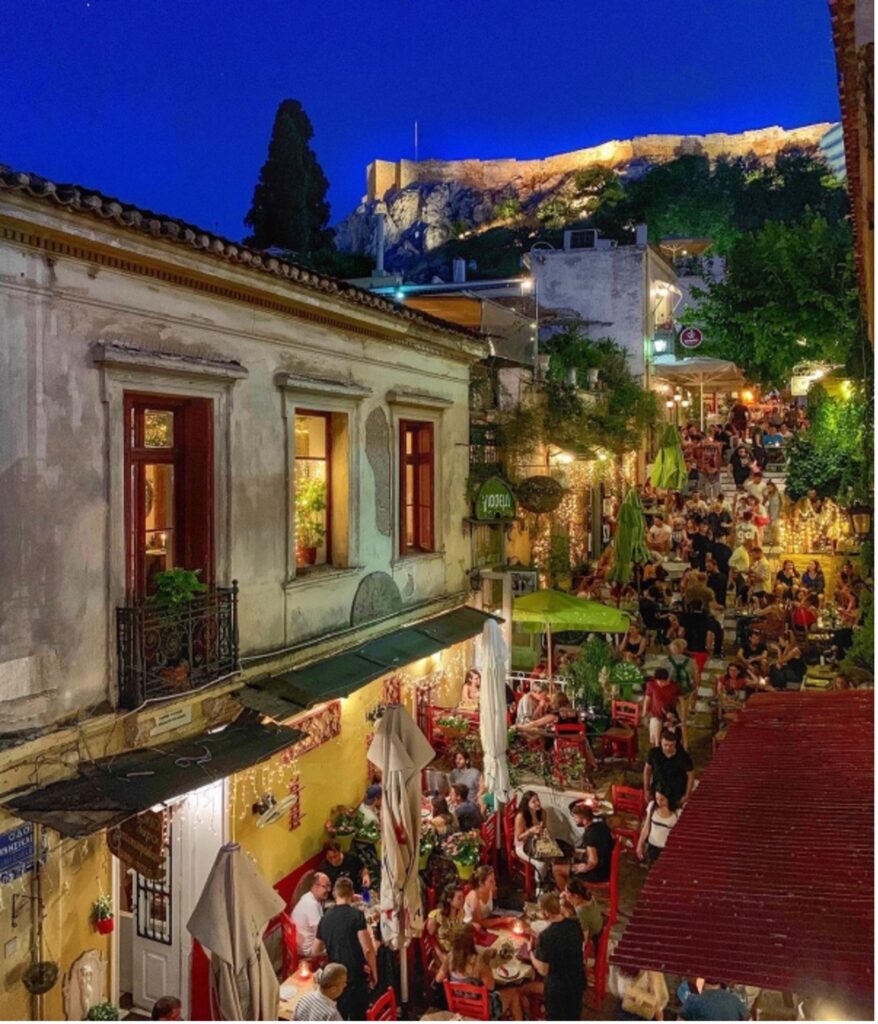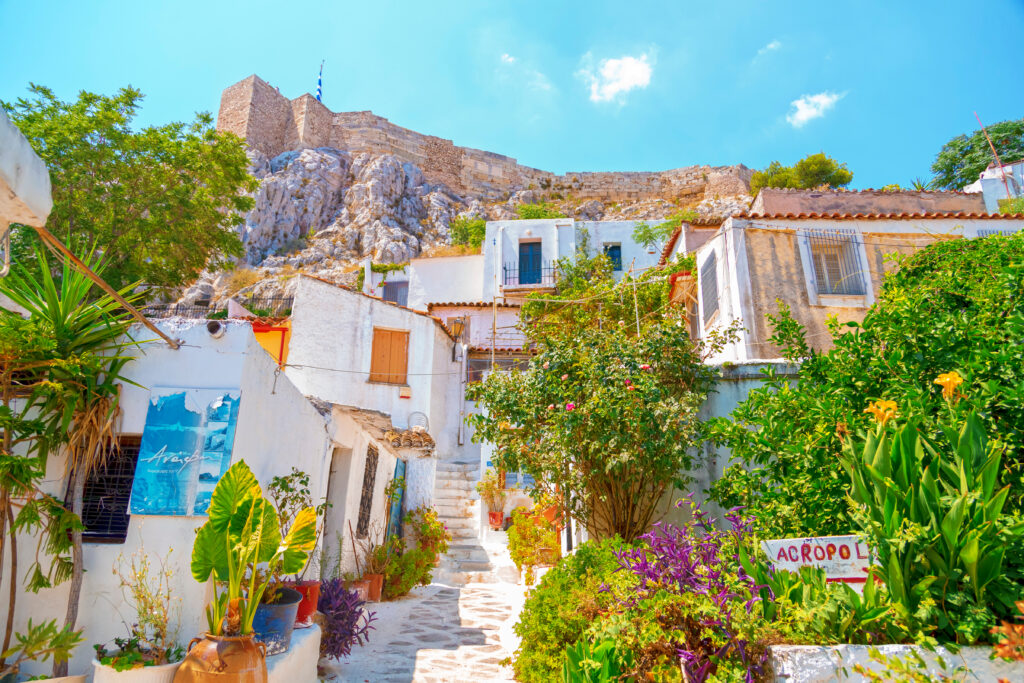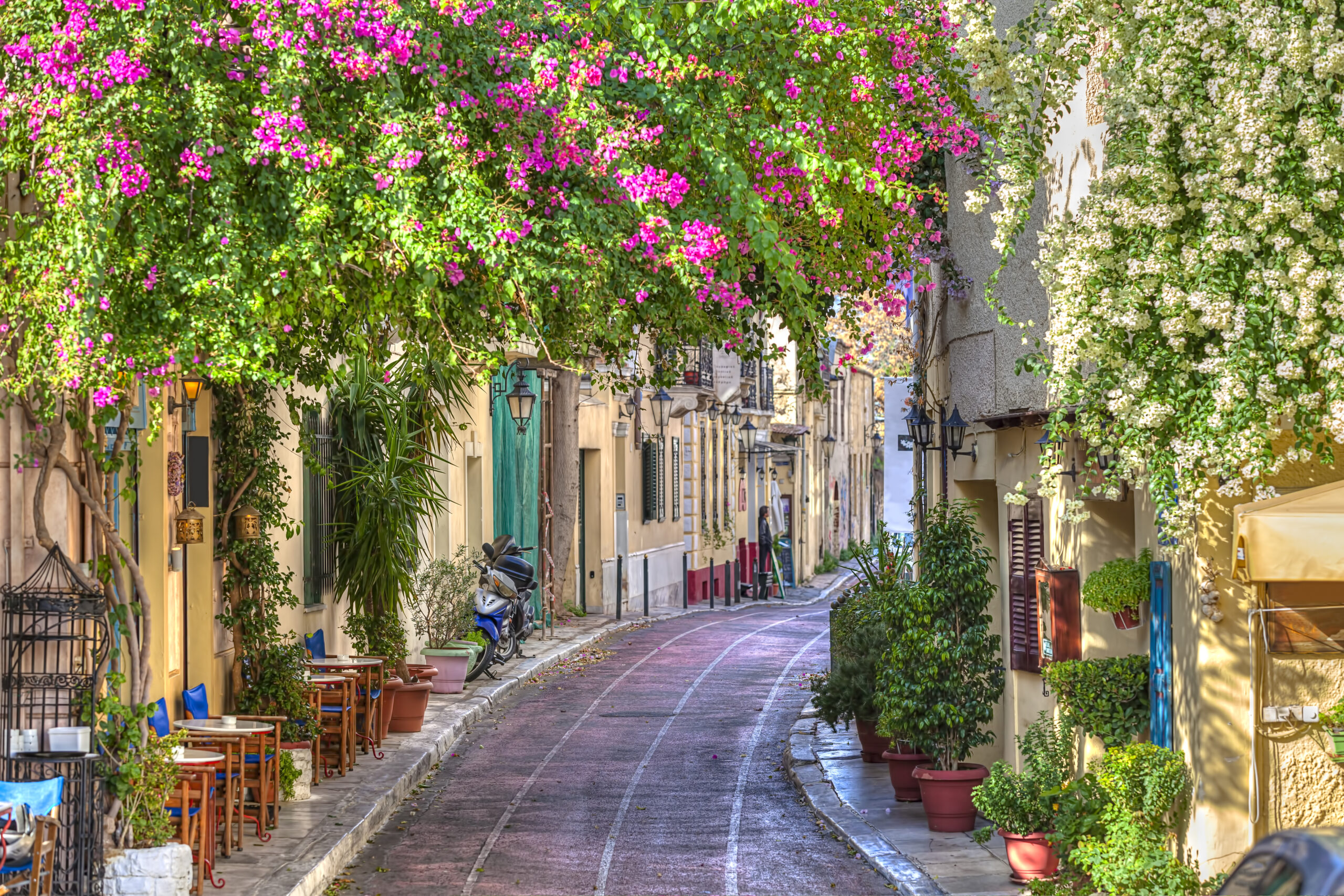Hugging the base of the Acropolis, Plaka is the one of the most ancient settlements in Europe with a history going back more than 3500 years. Plaka is also the most picturesque quarter in the heart of Athens, with narrow streets and picturesque buildings draped in Bougainvillea and other flowers. Most of the streets in Plaka are closed to traffic, and thus the best way to explore is to simply wander its lanes on foot, chasing glimpses of the Acropolis between the neoclassical buildings, Byzantine churches, cafes, restaurants, and souvenir shops.
Plaka has a village feel, with its narrow cobblestone streets lined with tiny shops selling souvenirs, sandals, jewelry, cloths, ceramics and much more. You will also find many sidewalk cafes, some with beautiful terraces, and family run tavernas that stay open until late for those nighttime cravings.

Main Plaka attractions: The primary sights to see in Plaka are, of course, the Parthenon itself and the Acropolis Museum. Ancient Agora and the Roman Forum with the “tower of the winds” are also not to be missed. Hadrian’s Arch & Monument of Lysicrates are accessible on foot, and free to everyone. If time permits, it is worth considering a visit to Benizelos mansion, the oldest house in Athens, which now operates as a museum. As you walk the streets of Plaka, you will likely come across the church of Agios Ioannis Theologos, which boasts an interior decorated by 13th century Byzantine wall paintings, as well as the beautiful 11th century church of Agios Nikolaos Ragavas.



The nearest metro station to Plaka is Acropolis station, however you can easily walk from Syntagma Square, a scenic stroll which will allow you to discover some of the back streets or “hidden” squares of Plaka.
Anafiotika: This tiny area is literally squeezed between the Acropolis Hill and Plaka. It is hard to believe that Anafiotika exists just under the rock that the Acropolis sits on, but it’s nestled in there; with its white painted narrow pathways, and feels as if you have been suddenly “transported” to a Greek island. Who lives here? How did it come to exist?
Basically, the majority of Plaka was repopulated by settlers from the island of Anafi (around 1840) who built a small community contiguous to Plaka, and featuring strong elements of Cycladic architecture and aesthetics (small white washed houses with colorful shutters & small beautiful gardens).
The small neighborhood consists of 45 small, cubic houses, each under 40 sq.m., which are currently inhabited. Many of the residents are retired, and have been living there since they were born. Anafiotika offers some of the best views in Athens.
Anafiotika can be very easily missed, however there are several different access points to get there. 1. Right under the Acropolis rock, walk up Thrasillou street, which is located opposite the Acropolis Museum, and continue straight to Stratonos street. 2. Follow Vyronos str and take a left turn onto Thespidos street and walk until you arrive in Statonos. Proceed straight until you meet the church of Agios Georgios tou vrahou. (GPS: Holy Church Of Saint George of the Rock).


We have no doubt that you will be mesmerized by all of the sights, sounds and activity in Plaka. Make sure that you take the time to walk down every street, no matter how narrow it is. There is quite a bit of charm to be found in the backstreets of Plaka. Enjoy!




